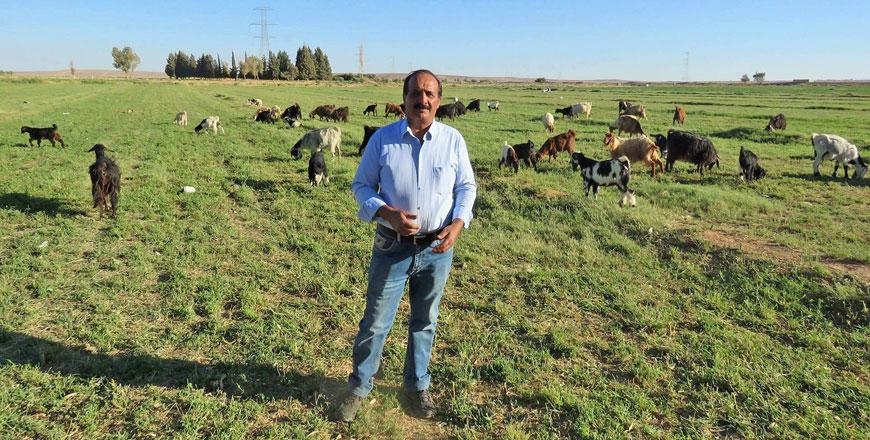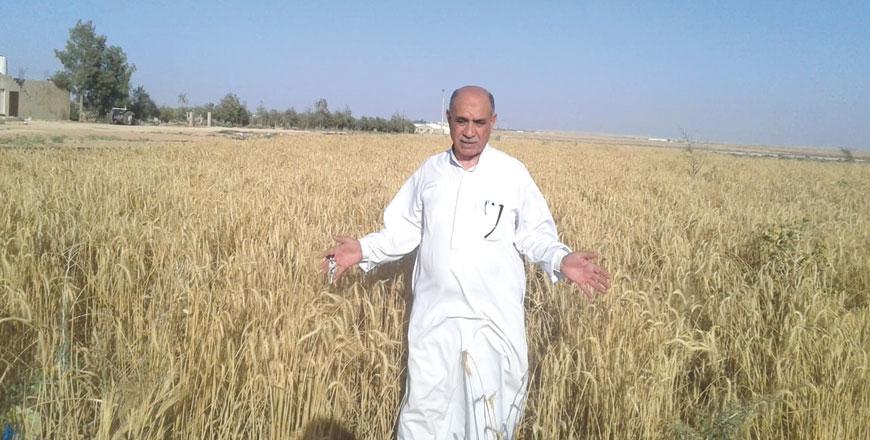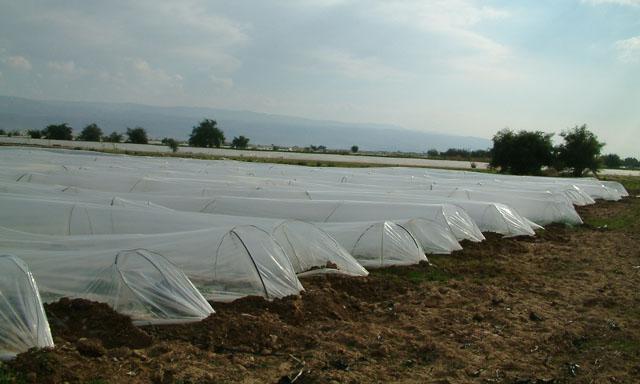You are here
Southern Badia pioneer inspires farmers in neighbouring areas
By Reem Rawashdeh - Jan 05,2019 - Last updated at Jan 05,2019

Hamad Thiabat Al Jazi poses for a photo on his land, with cattle behind him (Photo courtesy of Reem Rawashdeh)
AMMAN — For many years, the ruthless desert-like climate of the Husseinyieh area, in the Southern Badia district, used to push farmers and inhabitants away.
The land, barren, yellow and deserted, is acutely scarce of water, residents complained.
After many years of service in the army, 50- year-old Hamad Thiabat Al Jazi works with the Ministry of Water and Irrigation.
Returning to the land of his father was Jazi’s goal, he disclosed to The Jordan Times.
Under the bedouin resettlement project, engineered to encourage nomadic tribes to settle down and pursue a life of agriculture, Jazi’s father first started sowing the land decades ago.
Now, Jazi continues to build on his father’s legacy with success and plenty.
“Several years ago, I attended a field tour at Al Shobak Station, a National Centre for Agricultural Research affiliate, organised in cooperation with the International Centre of Biosaline Agriculture [ICBA]. It was then when I was first introduced to the new techniques,” Jazi said.
Notably, the Husseinyieh area suffers from both water scarcity and high soil salinity, he confirmed.
“At the beginning, I thought to try the new biosaline agricultural techniques on my own land. So, I planted 2 dunums with alfalfa and barley. By the end of the season, the harvest brought us enough ‘rejuvenating seeds’ to plant another 30 dunums, the next season,” Jazi said.
Jazi started working in the cooperative agricultural sector around two decades ago.
The agricultural pioneer, who is bringing back agriculture to the area where he lives, is also continuing in his father’s footsteps, running the bedouin resettlement project that he started in 1970.
On the one hand, the project resulted in a transformation, which urbanised parts of the Husseinyeh area, turning it into a residential area.
Dozens of residents are now working in agriculture, especially biosaline, which is a farming technique, launched by the ICBA in cooperation with the International Centre for Agricultural Research in Jordan.
The technique is based on planting crops and plants that can tolerate both high levels of salinity and temperature.
Many of the 17,000 residents there, according to the figures of the Jordan Department of Statistics, are shifting their attention to animal feed (fodder) agriculture.
A significant amount of them are now relying on biosaline agriculture techniques that make use of high water salinity, instead of the conventional methods that require non-saline water.
Since he hit jackpot around three years ago, he encouraged dozens of his district residents to return to farming their lands.
The area was plagued by negligence, as many land owners leased out their lands to people who gave no regard to the local infrastructure, Jazi complained.
As a result, he said, “people started investing in their own lands and taking care of their farming plots themselves, by working the lands themselves”.
“My experience with biosaline agriculture inspired them. Now, they are happy, and none of them are leasing out their land to others or deserting it. They learnt a harsh lesson neglecting their lands and renting them out,” he added.
“Organising field tours helps promote the biosaline agricultural technique, as they can see the new method in action,” Jazi said, pointing out that it is suitable for the area’s nature and climate.
The technique does not only “work”, according to Jazi.
“It doubled the harvest of fodder land plots; I even gave other farmers, within the Tal Barma agricultural project I am running, some of the seeds from my first biosaline harvest. That is on top of the 30 dunums I sowed for the second season.”
In fact, Jazi’s success did not only encourage his own townsmen, but has helped spread the techniques to nearby areas, like Al Jafar.
As he browsed photos of his yields, ready for harvest, Jazi said one of his daughters has decided to study agricultural engineering and specialise in soil and water, to assist in the investment and expansion of biosaline agriculture to other, bigger plots.
It is a lucrative investment, he noted.
“The harvest of biosaline farms is around 40 per cent more than the harvests of conventional farming,” he concluded.
Biosaline agriculture is spreading across several governorates in Jordan, especially in water-scarce areas suffering from rainfall fluctuation and water exhaustion from various domestic and agricultural uses.
Related Articles
AMMAN — For Odeh Al Turman, a man in his 60s, reaching the age of retirement was not the end of the road.
AMMAN — It is not a secret that Jordan suffers from water scarcity; more so with the change in climate and rainfall fluctuations over the pa
Many farmers in the Southern and Central Ghor are focusing on protected agriculture instead of planting citrus trees, Abdul Kareem Shihab, head of the Jordan Valley Agriculture directorate, said on Tuesday.














